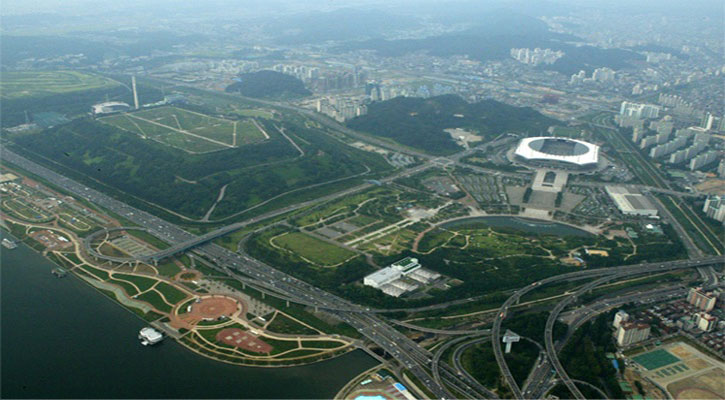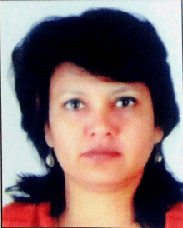 Seoul:
Seoul: As if the toxic gases spewed by the dumping ground were not enough, Deonar landfill in Mumbai is up in fire. The areas in proximity are choked with smoke and thick fog, second time since the fire erupted in January 2016. Since then it is simmering, with authorities just playing political game over it. Seven days of round the clock fire fighting hasn’t been able to bring the fire in control. No amount of foreign jaunts or as they would like to call them ‘study tours’ by our lawmakers gives them enough wisdom to handle landfills and waste management which I see as directly related to Prime Minister Modi’s Swatch Bharat Initiative.
Isn't it time we thought of long term solutions to address our waste management policy!!
Countries like Hongkong, Canada, UK, US have a waste management mechansim though, a small country like South Korea is an example to be learnt lessons from. It was a visit to Seoul which was an eye opener on how garbage dump can be made to be put to best use for the development of a city with nature and asthetics in place. Whether it be reviving a dead river or creating an ecologically viable park out of a 3.465 sq-km landfill, this country leads the world in its scientific waste management techniques.
Making Nanjido an eco friendly zone rather than letting it be an ecological disaster was taken as a challenge fifteen years ago. According to Chun Young Ja, an official of the city government, 3000 truckloads of waste used to be dumped in the landfill on a daily basis from the city.

By 1993 Nanjido having reached its saturation Korean authorities conceived a masterplan to convert the landfill site into an iconic landmark with Seoul having been chosen as one of the venues for the 2002 football world cup. Construction and landscaping in the shape of a park for one year and five months it finally saw the light of the day in 2002. Called the World Cup Park or Sky Park, the site now is a beautifully crafted ecosystem where flowers flourish and migratory birds visit every year. Nanjido Worldcup Park, receives nearly 10 million visitors.
How they did it was a feat in itself. As per statistics the landscape recovery project consisted of 4 segments. Leachate treatment, topsoil levelling and self recovery, extraction and recycling of landfill gas and slope stabilization.
According to the plan in order to treat leachate produced by the decomposition of waste, a leachate vertical barrier measuring 6017 m in length and 17-56 m in depth was built. 31 leachate collection wells were installed at intervals of 200 m to treat the collected leachate safely and then discharge into the Han river.
The topmost level and soil recovery work was designed to prevent rainwater from soaking into the landfill and stop the emission of landfill gas, so as to establish a suitable environment for plant growth. For that, waste was covered with a 50 cm layer of soil, the leachate vertical barrier was placed on the layer of the soil to prevent water from sinking inside and then it was covered with a 1m plus layer of soil to enable plants to grow.
106 landfill gas extraction wells were built to collect landfill gas at intervals on 120m of the upper parts and slopes of Haneul Park and Noeul Park. The wells were connected to transportation conduits to collect gas which is recycled as fuel for heating the Seoul World Cup Stadium and apartment complexes in nearby Nanjido.
To stabilize the slope of the mountain of garbage, slope stabilization work was conducted and a protection facility was installed. Also an afforestation project was implemented to plant grass and trees so as to establish an ecological habitat for wild animals.
This landfill turned park which was reborn as an environmental ecology park is now home to around 500 varieties of plants and 800 varieties of birds, insects and mammals. There is an emergence of a variety of naturized plants in the Nanji ecosystem. These naturized plants began to flourish amidst the gargantuam heap of waste and made an adjustment to their field of environments despite hazardous gases and sterile soil, forming a unique ecosystem.

This landfill turned park which was reborn as an environmental ecology park is now home to around 500 varieties of plants and 800 varieties of birds, insects and mammals. There is an emergence of a variety of naturized plants in the Nanji ecosystem. These naturized plants began to flourish amidst the gargantuam heap of waste and made an adjustment to their field of environments despite hazardous gases and sterile soil, forming a unique ecosystem.
Utilizing landfill gases from viable landfill sites is an emerging business in the South Korean solid waste treatment market. The city of Seoul has installed 100 methane gas extraction wells at the Nanji landfill site. The captured gas from these wells is sent to the Korea District Heating Corporation. The Corporation combusts the gas and distributes the heat energy to neighbouring facilities and households for heating and cooling. Seoul World Cup Stadium is one of the facilities supplied with heat from the LFG project at Nanji. Windmills generate pollution-free electricity to maintain the park's facilities such as offices and camp sites. To prevent air pollution, three Compressed Natural Gas shuttle buses provide transportation in the park in every 20 minutes.
The park also has mini marathon course, water fountains, and a nine-hole golf course for the visitors' enjoyment. It also presents an exhibition center that showcases the unique history of Nanji island that used to be a beautiful island, turned into a landfill site and finally converted into a World Cup Park.
It is composed of five smaller parks-Pyeonghwa Peace Park, Haneul Sky Park, Neoul Sunset Park, Nanji Stream and Nanji Han River or Nanjicheon Park apart from many other facilities. A panoramic view of Seoul, including Mt. Bukhan and Namsan, Han River and the 63 Building, is seen in the Peace Park. Various wild plants that are known as pollutant absorbers, such as violet, white Dutch clovers and sun flowers, are planted in the Sky Park. The golf course in the Sunset Park, a children's playground, multipurpose athletic field, and other facilities are provided in Nanji Stream and Nanji Han River parks.
Delhi and Seoul shared marked similarities of growing landfills posing ecological and health hazards for the residents of the city. With a dedicated approach to the problem and planning Seoul’s World Park is today a environmental landscape which is serving good for people of the city. Delhi can take lesson from Seoul to address the gigantic problem of waste disposal concentrating in Ghazipur, Okhla and Bhalsawa which cover acres and increasing in height each day.
A central fund of Rs 1,34,000 crores has ben allocated for the cleanliness drive out of which 100 crores has been spent on awareness campaigns only. In Delhi out of the almost 9000 tons of municipal waste generated on a daily basis, 2,500 tons is dumped at Ghazipur dumping yard. 50-feet tall Ghazipur landfill covers 70 acres. Then failure to segregate waste has promoted manual scavenging that is a source of livelihood of hundreds of children, women and men. The air is foul, land has turned unfertile and water is contaminated in and around the area.
More than planning to handle this waste yard and the efforts that are required to bring about a turnaround to this issue it’s the will of the governments and the agencies that will bring the results.
 Seoul: As if the toxic gases spewed by the dumping ground were not enough, Deonar landfill in Mumbai is up in fire. The areas in proximity are choked with smoke and thick fog, second time since the fire erupted in January 2016. Since then it is simmering, with authorities just playing political game over it. Seven days of round the clock fire fighting hasn’t been able to bring the fire in control. No amount of foreign jaunts or as they would like to call them ‘study tours’ by our lawmakers gives them enough wisdom to handle landfills and waste management which I see as directly related to Prime Minister Modi’s Swatch Bharat Initiative.
Seoul: As if the toxic gases spewed by the dumping ground were not enough, Deonar landfill in Mumbai is up in fire. The areas in proximity are choked with smoke and thick fog, second time since the fire erupted in January 2016. Since then it is simmering, with authorities just playing political game over it. Seven days of round the clock fire fighting hasn’t been able to bring the fire in control. No amount of foreign jaunts or as they would like to call them ‘study tours’ by our lawmakers gives them enough wisdom to handle landfills and waste management which I see as directly related to Prime Minister Modi’s Swatch Bharat Initiative. 

